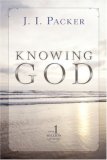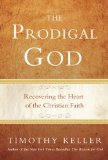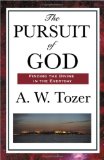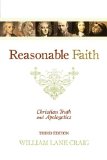Note: I promise this post will be more interesting than the title indicates. If you disagree, I’ll refund your money.
Anytime we encounter lists in the Bible, we’re probably tempted to breeze over them. There are, after all, more exicting things to get to and lists were something that were important to ancient people but less important to us. But, they can, at times, reveal something very near to the heart of the biblical authors.
Take, for instance, the list of the tribes of Israel in Revelation 7:5-8. It would seem straightforward enough, a listing of the 12 tribes is not that difficult to understand, except that when you look closely, the list isn’t quite what you’d expect. Here is the list in the order it’s presented:
- Judah
- Reuben
- Gad
- Asher
- Naphtali
- Manasseh
- Simeon
- Levi
- Issachar
- Zebulun
- Joseph
- Benjamin
Now, there are a number of listings of the 12 tribes in the Bible, and they almost always differ (Genesis 35:23-25; 49; Exodus 1:2-4; Numbers 1:5-15; 26; 1 Chronicles 2-8). I want to focus strictly on one aspect of this particular list, though, to demonstrate how it can reveal the author’s intentions. Levi is left off some lists in the OT, mainly because his sons became the priests of the land and did not receive an allotment of land like the other 11 tribes. Instead, Joseph’s two sons, Ephraim and Manasseh, received land, keeping the number 12 intact.
But this list is not for land allotments, so Levi makes an appearance. One would expect, then, that Joseph would be on the list and the number would come out to 12 again, corresponding to the actual 12 sons of Jacob who originally headed the 12 tribes. Joseph does make this list in Revelation 7, but so does one of his sons- Manasseh. Ephraim, on the other hand, does not make it (despite his brother’s presence). Dan, one of the original 12 sons of Jacob, is also left off the list.
The omission of Dan would seem to be confusing, given the presence of the other 11 brothes, and Ephraim’s absence is also confusing because of his brother, Manasseh, making the cut. So, the question is: of the available candidates (14 in all, the 12 sons and Ephraim and Manasseh), why were Dan and Ephraim chosen to be left off this list of tribes?
I would venture to guess that the answer goes back to 1 Kings 12:25-33. I’ll quote vv28-30 (TNIV), with an explanatory comment or two, to make the point:
After seeking advice, the king [Jeroboam, of the Northern Tribes] made two golden calves. He said to the people, “It is too much for you to go up to Jerusalem. Here are your gods, Israel, who brought you up out of Egypt.” One he set up in Bethel [which was controlled by the tribe of Ephraim, Jeroboam’s tribe], and the other in Dan. And this thing became a sin; the people came to worship the one at Bethel and went as far as Dan to worship the other.
The tribes of Ephraim and Dan became the centers of idolatry for the Northern Kingdom. Instead of going to God’s Temple in Jerusalem to worship and offer sacrifices, the citizens of the northern tribes (all except Benjamin and Judah) would worship at these two centers of idolatry. Hosea even changes the name “Bethel” (meaning “House of God”) to Beth Aven (“House of Wickedness,” see Hosea 4:15; 5:8; 10:5).
I don’t think the omission of Ephraim and Dan are random or accidental, especially given their roles in the Old Testament as the centers of idolatry. Idolatry is a grave concern for the book of Revelation because it gives worship that is due only to The One Who Sits on the Throne and the Lamb (see 4:8-11; 5:9-14; 7:10-17).
The churches of Pergamum (2:12-17) and Thyatira (2:18-29) are warned about new incarnations of Balaam (who enticed the Israelites toward idolatry, see Numbers 31:1-24) and Jezebel (who promoted Baal worship in the Northern Kingdom, see 1 Kings 18; 21:25; 2 Kings 9:22). The people of the earth worship the dragon (13:4) and the beast (13:8, 11-17), and kill those who refuse (13:15). Throughout the Bible, adultery and harlotry (chapters 17-18) are images used of idolatry.
But we are encouraged to “worship him who made the heavens, the earth, the sea and the springs of water” (14:7; 15:1-4). Those who worship the beast and receive his mark will be judged (14:9, 16:2; 19:20-21). Those who reign with Christ in 20:4-6 are those “who had not worshipped the beast or his image.” Idolaters are among those who will have no part in the New Heaven and New Earth (21:8; 22:15).
Looking back at the list of the tribes in Revelation 7, John could have chosen a different way of presenting them. He could have gone with the originally 12 sons of Jacob, leaving out Ephraim and Manasseh and including Dan. He could have gone with the 12 tribes as they received their portions of land, leaving out Levi and Joseph and adding Ephraim and Manasseh. But Ephraim and Dan were the ones omitted.
I submit it was because of their role in leading Israel into idolatry. I want to be clear, I don’t take this list of 12 literally, as if no descendents of Ephraim or Dan have any part in the Kingdom of God. I think there is a theological and literary point John is making throughout the book that is captured in this list, or more specifically, what is omitted from the list. Those who participate in idolatry, who worship anything other than the only One worthy of worship, have no inheritance in God.

 Chapter 4 of Knowing God is always one of the most interesting to discuss. It is here that Packer deals with the second commandment and proper worship of God. His basic premise is that the 2nd commandment, which is a prohibition of idols, is talking about making an idol or representation of God Himself. Many Christians take it as setting up an idol and worshipping it instead of God, but Packer argues this would be nothing more than repeating the first commandment. For the sake of conversation we’ll go with Packer’s notion here, with the caveat that not all agree with him.
Chapter 4 of Knowing God is always one of the most interesting to discuss. It is here that Packer deals with the second commandment and proper worship of God. His basic premise is that the 2nd commandment, which is a prohibition of idols, is talking about making an idol or representation of God Himself. Many Christians take it as setting up an idol and worshipping it instead of God, but Packer argues this would be nothing more than repeating the first commandment. For the sake of conversation we’ll go with Packer’s notion here, with the caveat that not all agree with him. In this last portion of the review I will summarize briefly the contents of the last 2 chapters, as well as offer some final thoughts on the book as a whole.
In this last portion of the review I will summarize briefly the contents of the last 2 chapters, as well as offer some final thoughts on the book as a whole. I mentioned at
I mentioned at 









